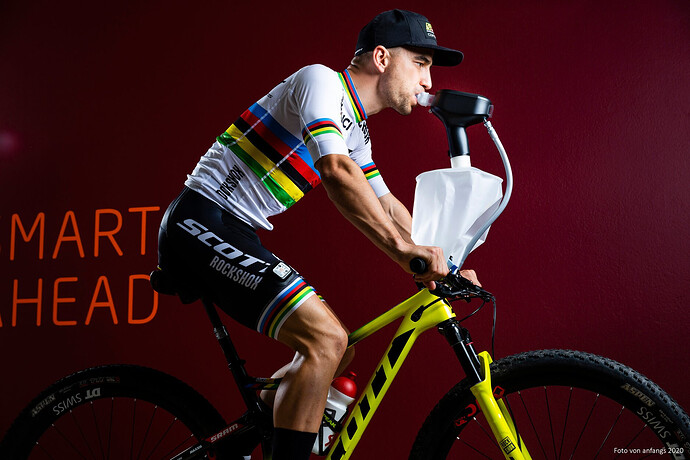I have a couple questions about respiration training that hopefully @steveneal might be able to answer.
How do you quantify progress?
When we train on the bike there’s a goal (increase LT1, increase 5m power, increase FTP, etc.) We usually measure a baseline, perform some training, then measure again to see if what effect the training had and make adjustments.
How does this work for respiration training? Does simply ‘doing the work’ diminish the likelihood that respiration is a limiter? Or are there things we measure to make sure?
What should a training-program look like?
There are a few different ways to organize cycling training, does respiration training have any established patterns to follow?
Are there any best-practices for training respiration? Should we train daily, 3x a week, 1x a week? Should respiration training take place directly before, directly after or several hours removed from cycling training?
An Example?
Would you be willing to use me as an example? I have an Idiag P-100 (just like Nino  ) Assuming I wanted to improve my respiration for road racing, what are some good first steps? What would I baseline test? How would I train, and how frequently would I monitor “progress”?
) Assuming I wanted to improve my respiration for road racing, what are some good first steps? What would I baseline test? How would I train, and how frequently would I monitor “progress”?
Thanks a ton for your time, really curious to hear your thoughts. Does anybody else here use any respiratory training devices?
3 Likes
@DREWSTOW glad to help! Back with some great places to start and answers to your questions tomorrow.
Steve
4 Likes
Hello @DREWSTOW
Here we go.
We will go through this step by step with instructions being that you are using a P100 from Idiag.
Each respiration training device requires a different type of training program.
There will be a bit of back and forth to get started.
+++
The first thing I need you to do is the endurance test, so that I can know on the P100 what your Vital Capacity is, I know yours is often around 7 litres, but let’s repeat the test so we have a current number. I would recommend doing this test each week.
The first goal is to see where your volume ability is. Normally I compare this to FEV1 from a spirometry test, which then becomes the basis of designing the program in the beginning. Without having FEV1, we will assume that yours is 80-82% of your FVC (the number we find in the P100 and spirometry).
I like to start the program working on volume first, working towards someone being able to breathe at 85% of their FEV1 for 10 minutes. We will be be using 85% of your FVC from the Idiag P100 to get as close that as possible.
-
Take the volume test on the P100.
-
Using 75% of that number, complete an endurance session for 5 minutes at a comfortable breathing frequency between 22-26
-
Take a screenshot of that session data that you get at the end of the workout.
From that information I will be able to make a decision on next steps.
After this session, once we have a program, if you are interested would be great if we could record these coaching sessions together and put them on youtube.
4 Likes
 ) Assuming I wanted to improve my respiration for road racing, what are some good first steps? What would I baseline test? How would I train, and how frequently would I monitor “progress”?
) Assuming I wanted to improve my respiration for road racing, what are some good first steps? What would I baseline test? How would I train, and how frequently would I monitor “progress”?